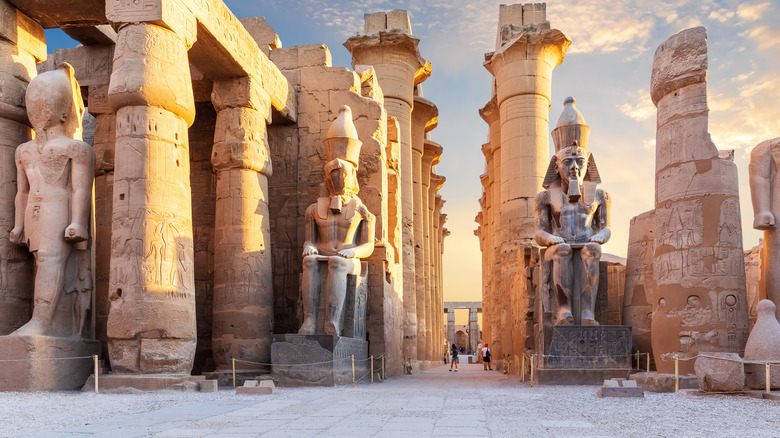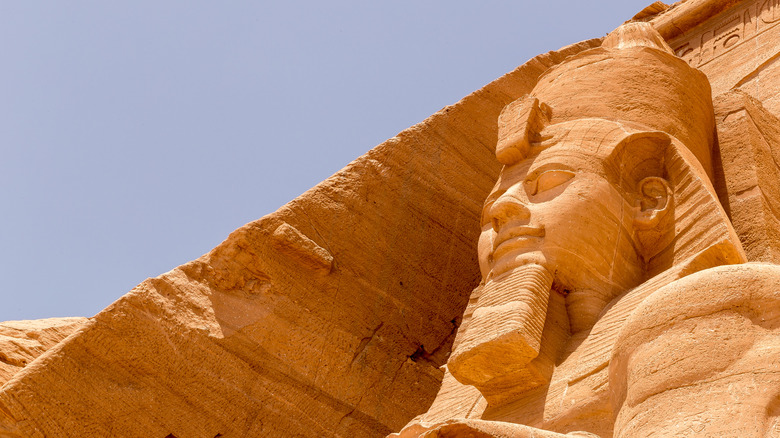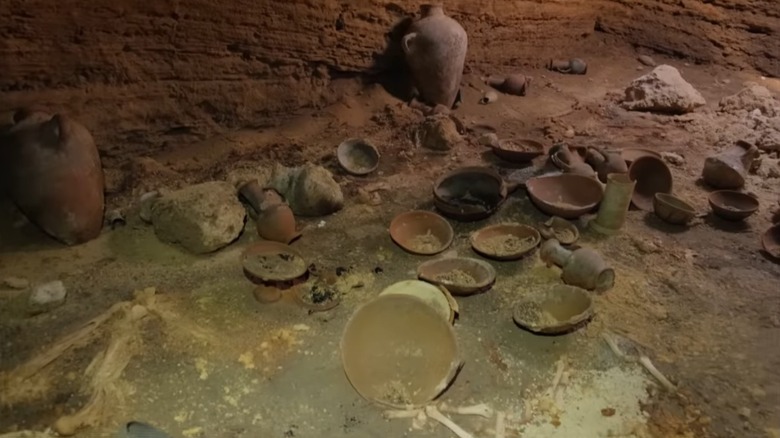An Israeli Construction Crew Stumbled Upon An Ancient Cave Dating Back To King Rameses II
In September, a construction crew working in Palmachim Beach National Park in Israel stumbled upon something they weren't expecting: a manmade cave. The crew's digging equipment poked a hole in what turned out to be the cave's roof. Peeking into the hole, the workers could see a room. When they called in a team of archaeologists, the contents of the cave were even more amazing: funerary items dating back about 3,300 years (via Miami Herald).
The archaeologists were part of the Israel Antiquities Authority (IAA), and they descended into the cave via ladder, finding it square shaped with a central pillar supporting the roof. The team described the cave as "frozen in time" and "untouched" since the burial took place, according to CBS News. The cave contained pottery and bronze items including bowls, storage jars, chalices, cooking pots, lamps, and arrowheads. Most of it was intact, and some of the bowls still had red paint on them. These types of artifacts would have been intended to accompany the dead for their use in the afterlife. The archaeologists hope this discovery will help them learn more about funerary customs in the Late Bronze Age.
Egyptian rule of Israel
The site of the cave is on the Mediterranean coast of Israel, south of Tel Aviv. The Palmachim Beach National Park is known for its archaeological sites, including the ruins of the city of Yavne-Yam from the Middle Canaanite period (via Miami Herald).
The newly-discovered cave has been dated to the period of King Rameses II of Egypt, who died in 1213 B.C., per CBS News. The Miami Herald notes he was the Pharaoh discussed in the Biblical Book of Exodus. In Exodus, enslaved Jewish people escaped from Egypt under Moses' guidance by passing through the Sea of Reeds, often misidentified as the Red Sea, according to Britannica. The Biblical Archaeology Society explains that the Exodus has been associated with the Ramesside Period based on sites in Egypt dating to that era that have Semitic names and architecture, and because of place names mentioned in Exodus that correspond only to the Ramesside period. In any case, the cave site in Israel would have been under Egyptian control at the time the burial was conducted.
Who is buried in the cave?
The items in the cave are not of Egyptian origin, but some came from areas outside Israel, including Lebanon and Cyprus (via Miami Herald). It's a testament to the active trading culture on Israel's coast at the time, CBS News explains.
Archaeologists found one mostly-intact skeleton in the cave, as well as some other bones, and IAA archaeologist David Gelman speculated about the people's identity.
"The fact that these people were buried along with weapons, including entire arrows, shows that these people might have been warriors," he said. "Perhaps they were guards on ships — which may have been the reason they were able to obtain vessels from all around the area."
The cave isn't the only recent, noteworthy archaeological discovery in the area. In southern Israel, a 1,200 year old estate, an ancient mosque, and a tusk of a prehistoric pachyderm have been unearthed this year. In Gaza, near the Israeli border, a Byzantine-era mosaic was uncovered not long ago. Conservation of the latter may be a problem because the site isn't well-protected, which is true for many archaeological sites in Gaza.
But the preservation of the newly-discovered cave may be precarious too. Though it has been guarded constantly and resealed since its discovery, looters managed to take some items anyway. The theft is under investigation.


